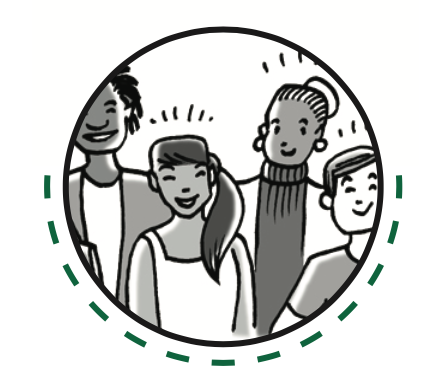Brian Ryczkowski, Little Chute, WI, bryczkowski@littlechute.k12.wi.us
Looking for a way to create purposeful student movement, have teams compare their solutions as they finish a problem, and construct viable arguments? Consider a Board Report.
The last few years, co-teacher Rudy Botz and I used the Study Team and Teaching Strategy GPS (aka Magnet Race or Dragon’s Tail) in class to monitor which problem students were on and to create movement within the classroom. We also used custom Desmos activities to see what answers the teams were coming up with for each problem. While we circulated, we critiqued each team’s reasoning to see what they had written down.
One day when Rudy and I were planning for geometry, the lesson called for students to calculate the missing side lengths of right triangles. We talked about using a custom Desmos activity to monitor what solutions teams were coming up with. If we saw they had the wrong answer, we would travel to their team and begin critiquing their reasoning for the tool (sine, cosine, or tangent) they selected.
That day, Rudy and I began to wonder if we could get teams to compare their solutions during class without interrupting them by calling for a Swapmeet or Huddle. We wanted teams to be able to submit their answers so we decided we were going to give each team a pack of sticky notes. There were several problems that we wanted to know what each team came up with, so we wrote those problem numbers on the board. We were going to have teams write their team number on the sticky note, along with their solution. Teams would place their sticky note on the board next to the appropriate problem number. This would serve as a guide so we knew which teams were finished with which problems, as well as to serve as a way for teams to submit their answers. What happened in class was completely unexpected.
A student would walk up to the board to submit their answer, see they had something different than a another team, take the sticky note off the board, walk to that team, and start a math conversation. They asked the team which tool they used and why. The visitor would critique the reasoning of the team they were visiting. It resulted in one team throwing away a sticky note and adjusting the work in their notebook.
One day, a junior who is repeating geometry and does not particularly care much for school, brought his team’s answer to the board, stuck his answer next to the others, turned and looked at Rudy and me, gave a thumbs up, and walked back to his seat. Rudy and I still laugh about that to this day because we could not believe how proud he was for submitting an answer similar to his classmates.
After doing many Board Reports, there were lessons learned along the way. The day you do your first Board Report, we suggest positioning yourself near the board when students submit their solutions. That way, if two solutions do not match, you can provide them with alternative options on what they can do. Additionally, we always announce that someone different should report on behalf of their team. It allows them a chance to get up and move, as well as a chance to travel to a different team if they have differing solutions. Also, we found out that the questions with short solutions work best. If a problem requires choosing a tool and setting up an equation with many steps to solve, it is best if teams only report the end solution. If they do not match, that is when teams would have a chance to compare more aspects of the problem and have a more in-depth conversation. Finally, there may be days where only a portion of the questions are a good idea to report. For example, if a lesson calls for students to complete problems 20-24, you may only write 20b, 20c, 22, 23a, 23c, 23e on the board. Make sure the Facilitator writes down “20-24” in their notebook so they know which problems to complete, but the Task Manager keeps an eye on which problems to report.
Without a doubt, The Board Report is the best Study Team Teaching Strategy (STTS) that we have deployed in our time using CPM. Rudy and I still circulate around the room and check for understanding. There are many days we use custom Desmos activities or a GPS. However, each day when are planning, we always ask the following questions: 1. What is the goal? 2. What is the closure? 3. Where will students struggle? 4. Are there any questions they can Board Report?
View a timelapse video of a Board Report.
